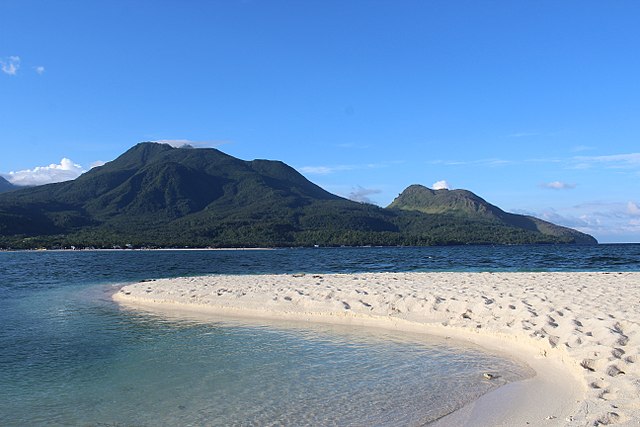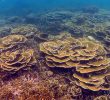
Mt. Hibok-Hibok in Camiguin island (Photo by Wikimedia Commons)
CAGAYAN DE ORO CITY, Philippines – Volcanoes that have not shown any signs of activity for years could still erupt at any given time, an official of the Philippine Institute of Volcanology and Seismology in the region (Phivolcs-X) said Tuesday (Jan. 28).
Marcial Labininay, Phivolcs-X officer-in-charge, said there are three classifications of volcanoes. First is the “active” type or those that “erupted within historical times.”
Accounts of these eruptions, he added, were documented by man within the last 10,000 years based on the analyses of materials from young volcanic deposits.
Phivolcs classifies Mts. Taal, Pinatubo and Mayon as active.
The second classification is the “potentially active” or those “morphologically young-looking but with no historical or analytical records of eruption.” Meanwhile, the last type of volcanoes is the “inactive” or those defined as “no recorded eruptions physical form has been intensively weathered and eroded, bearing deep and long gullies.”
In Mindanao, some of the active volcanoes are Mt. Hibok-Hibok in Camiguin, Mt. Musuan or Mt. Calayo in Bukidnon, Mt. Matutum in Cotabato, Mts. Makaturing and Ragang in Lanao del Sur, Mt. Leonard Kniaseff in Davao del Norte, Mt. Bud Dajo in Sulu, and Mt. Parker in Central Mindanao.
“Whatever the classification is, we must not take any chances. We have to remind people to be on watch,” Labininay said.
The official noted though that an eruption can be predicted due to the volcanic earthquakes that occur in advance.
No volcanic activity
In Camiguin, Phivolcs-10 has not recorded any volcanic activities such as smoke emissions, tremors, and other movements in decades.
The island-province has nine volcanoes, including Mt. Hibok-Hibok, Mt. Mambajao, Mt. Guinsiliban, Mt. Timpoong, Mt. Vulcan, Mt. Uhay, and Mt. Tres Marias.
Based on the Phivolcs website, only Mt. Hibok-Hibok has been classified as active. Its last eruption was in 1952 and 1953. Labininay said nature, and possibly climate change, can trigger its next eruption.
Since 2007, seven sensors have been installed on the volcanoes to constantly monitor them, according to Camiguin Gov. Jurdin Jesus Romualdo.
Although the volcanoes in the island have no alarming movements since 1953, Romualdo said they are not taking any chances. He added he’s been reminding the residents to be prepared in case of eruption.
He said the temperature in Ardent Hot Spring, one of the tourist attractions in the province that’s located at the foot of Mt. Hibok-Hibok, has gone down in the last few years. Their recent record was at 33 to 34 degrees. In the past, its temperature could reach up to 47 degrees Celsius.
Romualdo said this could be an indicator that Mt. Hibok-Hibok no longer poses a threat to Camiguin. And while the change in temperature could have an effect on the tourism industry, the governor said they could still develop Ardent into a water park if it no longer offers the temperature that it is known for. (davaotoday.com)









